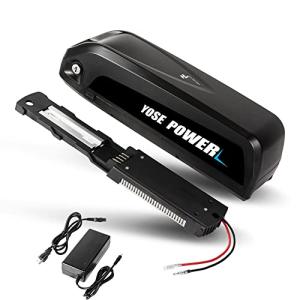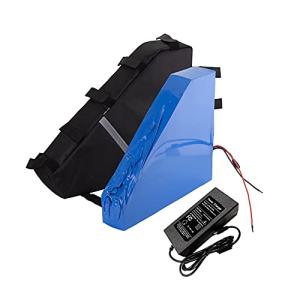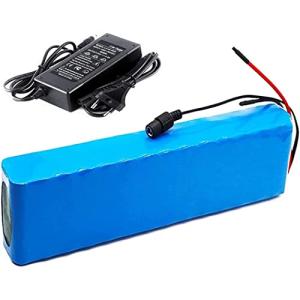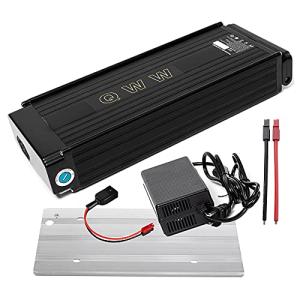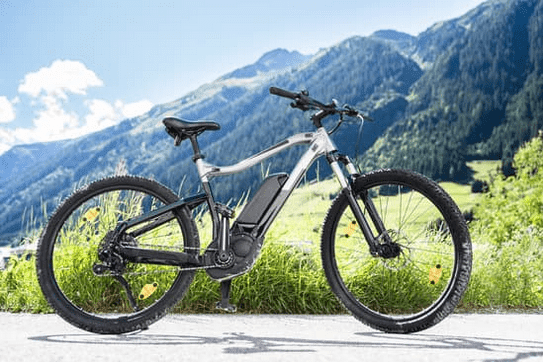Tips for Keeping Your E-Bike Battery Healthy and Lasting Longer:

My e-bike's battery is its most crucial component, and taking good care of it is essential for its longevity and efficiency.
Proper e-bike battery care is more than just plugging it in. It needs a thoughtful approach to charging and storage. I've learned that keeping my e-bike battery in good condition not only extends its life but also improves its performance.
By following the right e-bike battery charging tips and maintenance practices, I get a more reliable and efficient ride. In this guide, I'll share the best ways to charge and store your e-bike battery.
Key Takeaways
- Understand the importance of e-bike battery care
- Learn proper e-bike battery charging methods
- Discover best practices for e-bike battery maintenance
- Find out how to store your e-bike battery correctly
- Improve your e-bike's overall performance and longevity
Understanding Your E-Bike Battery
To get the most out of your e-bike, knowing your battery is key. The battery is crucial, and with the right care, it can last a long time. Lithium-ion batteries, for example, are commonly used in e-bikes because they store a significant amount of energy and have a long lifespan.
Types of E-Bike Batteries and Their Characteristics
E-bike batteries vary, like Lithium-ion (Li-ion), Nickel-Manganese-Cobalt (NMC), and Lead-Acid. Li-ion batteries are favored for their high energy and long life. NMC batteries strike a balance between performance and cost. Lead-acid batteries are less common because they're heavy and have less energy density.
Battery Capacity and How It Affects Range
Battery capacity, in Watt-hours (Wh), shows how far you can go on one charge. A bigger capacity means you can ride further. For instance, a 500Wh battery will go further than a 300Wh battery, under the same conditions.
Factors That Impact Battery Lifespan
Several factors can impact the lifespan of your e-bike battery, including how you charge it, where you store it, and your riding habits. Good charging habits, like not letting it fully drain and keeping it cool, help it last longer. Regular checks can spot problems early.
How to Properly Charge and Store Your E-Bike Battery
Charging and storing your e-bike battery correctly is crucial to maintaining its optimal condition. To do this, follow some important steps.
Step-by-Step Charging Process
First, refer to your bike's manual for charging instructions. Connect the charger to the battery and plug it into a wall outlet. Always use the charger provided by the bike's manufacturer to avoid potential problems.
Optimal Charging Environment and Temperature
Where you charge your battery matters a lot. Don't charge in direct sunlight or very hot or cold places. Store in a cool, dry place, away from sources that can ignite. The best temperature for charging is between 50°F and 68°F (10°C and 20°C).
Charging Frequency and Depth of Discharge
Knowing when and how to charge your battery is crucial. How often and how deeply you discharge it can affect its life.
When to Charge: Before or After Rides
Charge your battery after a ride, when it's cool. Avoid charging immediately after a long or strenuous ride, as it can stress the battery. If you won't use your e-bike for a while, charge it to about 50% before storing it.
Partial vs. Full Charging Cycles
Most e-bike batteries can handle partial charges well. But it's still best to avoid letting it go all the way to zero often. Charge it when it's between 20% and 80% full instead.
| Charging Practice | Impact on Battery Life |
|---|---|
| Charging after every ride | It can be convenient, but it may reduce battery lifespan if done excessively. |
| Charging when the battery is between 20% and 80% full | Recommended for maintaining battery health |
| Completely draining the battery regularly | Can reduce battery lifespan |
YOSE 48V Lithium E-Bike Battery with USB Port
Power up your rides with this durable and versatile battery featuring a handy USB port for all your devices
Product information
$215.79
$203.10
Product Review Score
4.9 out of 5 stars
47 reviews
Product links
YOSE 48V Lithium E-Bike Battery with USB Port
Power up your rides with this durable and versatile battery featuring a handy USB port for all your devices
Product information
$215.79 $203.10
Product Review Score
4.9 out of 5 stars
47 reviewsProduct links
Advanced E-Bike Battery Charging Techniques

Charging your e-bike battery correctly is as key as keeping your bike in top shape. The right charging methods can help your battery last longer and enhance your riding experience.
Avoiding Common Charging Mistakes
Many e-bike owners charge their batteries for too long, which can shorten their lifespan. It's also bad to charge too little, as it hurts performance. Always follow the charging times recommended by the manufacturer.
Using the Correct Charger and Adapters
Using the charger provided by the manufacturer ensures it meets your battery's specific needs. I only use chargers recommended by the maker to avoid damage and fires.
Smart Charging Systems and Their Benefits
Smart charging systems revolutionize the way we charge e-bike batteries. They stop charging when full, preventing overcharge. They also give info on the battery's health.
Safety Precautions During Charging
Charging your e-bike battery safely is crucial. Never charge it overnight or leave it unattended. I charge mine in a place with good air, away from things that can catch fire.
| Charging Practice | Benefit | Safety Impact |
|---|---|---|
| Using Manufacturer's Charger | Ensures Compatibility | Reduces Risk of Electrical Fires |
| Avoiding Overcharging | Prolongs Battery Life | Prevents Battery Damage |
| Smart Charging Systems | Optimizes Charging Process | Enhances Safety Features |
72V 19.2AH Ebike Battery for High-Power Motors
Get reliable power and long-lasting performance for your electric bike adventures
Product information
Product Review Score
4.64 out of 5 stars
112 reviews
Product links
72V 19.2AH Ebike Battery for High-Power Motors
Get reliable power and long-lasting performance for your electric bike adventures
Product information
Product Review Score
4.64 out of 5 stars
112 reviewsProduct links
E-Bike Battery Storage Recommendations

Storing your e-bike battery correctly is crucial for its longevity and performance. The right storage methods can significantly impact the battery's lifespan and overall performance.
Preparing Your Battery for Storage
Before storing your e-bike battery, ensure it is prepared. Charge it to approximately 50% of its capacity, as recommended by the manufacturer. Don't let it fully drain, as this can harm it over time.
Short-Term Storage Guidelines (1-4 Weeks)
For short storage, keep the battery in a cool, dry spot. Stay away from sunlight and moisture. Also, choose a place with good air flow to avoid gas buildup.
Long-Term Storage Methods (1+ Months)
For longer storage, check on the battery often. Every few months, charge it to the recommended level if it's low. This keeps the battery healthy and prevents deep discharge.
Ideal Storage Conditions: Temperature, Humidity, and Location
The ideal storage for an e-bike battery is a cool, dry location. Keep it between 50°F and 68°F (10°C and 20°C) and low humidity. Avoid places with extreme temperatures or high humidity, such as basements or attics.
| Storage Condition | Ideal Range |
|---|---|
| Temperature | 50°F to 68°F (10°C to 20°C) |
| Humidity | Low, avoid high moisture |
| Location | Avoid direct sunlight and extreme environments |
By following these e-bike battery storage recommendations, you can prolong the life of your battery. This ensures it's ready for your next ride.
Extending E-Bike Battery Life Through Proper Maintenance
I've found that regular checks and maintenance can really help my e-bike battery last longer. Taking good care of it keeps my e-bike running well for a long time.
Establishing a Regular Maintenance Routine
To keep my e-bike battery in top shape, I stick to a routine. I check the battery's charge, clean the connections, and ensure the battery management system is functioning correctly.
Cleaning and Inspecting Battery Connections
Cleaning the battery connections is a simple but effective step. I use a soft brush and a mild cleaner to remove dirt and corrosion. Regular checks help spot problems early.
Recognizing Signs of Battery Degradation
It's essential to recognize when the battery is nearing the end of its life. Look out for reduced range problems, charging difficulties, and other signs that indicate it may need professional repair.
Reduced Range Problems
If my e-bike's range drops significantly, it could mean the battery is aging. This can occur due to age, deep discharge, or poor charging habits.
Charging Difficulties
Having trouble charging the battery is another warning sign. It may be due to a faulty charger, damaged cells, or an issue with the battery management system.
When Professional Service Is Needed
If I see these signs, it's time to get help from a pro. They can find the problem and fix or replace what's needed to get my e-bike back to normal.
By following these tips and monitoring the signs of battery wear, I can extend the life of my e-bike battery. This means I get to enjoy a more reliable ride.
Conclusion
Following the e-bike battery care tips in this article can greatly extend your battery's life. It's essential to charge, store, and maintain it properly for optimal performance and longevity.
To keep your e-bike in top shape, follow the best practices for battery care. This means avoiding extreme temperatures, adjusting your charging habits, and regularly checking your battery connections.
By using these tips, you'll enhance your riding experience and prevent costly battery replacements. A well-maintained battery means longer rides and more fun on your e-bike.
Now you know how to take care of your e-bike battery. You're all set to enjoy the ride with confidence. Happy riding, and may your adventures be filled with joy and excitement!
FAQ
How often should I charge my e-bike battery?
Charging your e-bike battery depends on how you ride and the type of battery. It's best to charge when it's 20% to 80% full. Try not to let it drain all the way to 0% too often.
What is the ideal storage temperature for my e-bike battery?
Keep your e-bike battery in a spot between 50°F to 68°F (10°C to 20°C). Avoid very hot or cold places to keep it working well.
Can I use any charger with my e-bike battery?
No, you must use the charger made for your e-bike battery. Using the wrong charger can harm your battery, cause fires, or pose safety risks.
How can I extend the lifespan of my e-bike battery?
To extend the life of your e-bike battery, charge and store it properly. Avoid extreme temperatures and maintain your vehicle regularly. This includes cleaning and inspecting the battery connections, as well as checking for signs of wear.
What are the signs of battery degradation?
Battery degradation is indicated by reduced range, slower charging, and physical damage, such as swelling. If you see these signs, act promptly to address the issue or replace the battery.
How do I properly clean and inspect the connections on my e-bike battery?
Clean your battery connections with a soft brush and a dry cloth. Inspect for corrosion or wear and address any issues to maintain optimal battery performance.
Can I store my e-bike battery for an extended period?
Yes, you can store your e-bike battery for an extended period. Just follow the storage tips. Charge it to 50%, store it in a cool, dry place, and check on it periodically.
What are the benefits of using a smart charging system for my e-bike battery?
Smart charging systems improve your e-bike battery's performance and life. They monitor and control charging, providing insights into your battery's health and helping you spot problems early.
DISCLAIMER
This document is provided for general information purposes only and should not be relied upon as providing legal advice, technical, or specific operational guidance to the reader, whether as to the practices described in the document or the applicable legal requirements and regulations. justelectricbikes.com expressly disclaims any responsibility for liability arising from or related to the use or misuse of any information in this document.

